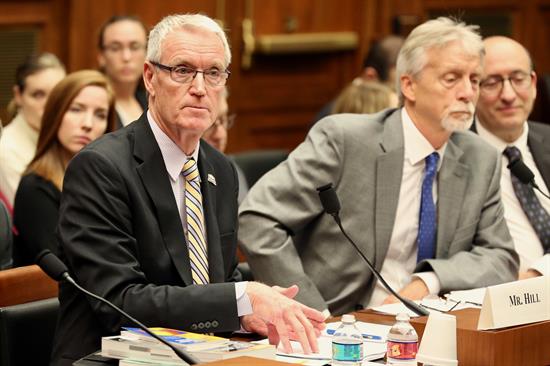Today, the Subcommittee on Workforce Protections, chaired by Rep. Bradley Byrne (R-AL), held a hearing on “A More Effective and Collaborative OSHA: A View from Stakeholders.”
“No matter the size of the business, the number of workers it employs, or the industry it supports, workplace safety is the responsibility and should be a chief priority of all businesses. Every worker deserves a safe and healthy workplace,” said Chairman Byrne in his opening statement.
Chairman Byrne continued, “Today’s hearing will focus on how OSHA can work more cooperatively with job creators, especially in the small businesses community, to expand its compliance assistance efforts and for employers to provide the safest and healthiest workplaces possible.”
Members of the subcommittee heard from various stakeholders who are impacted by OSHA policies. Mr. Peter Gerstenberger, Senior Advisor for Safety, Standards and Compliance for the Tree Care Industry Association (TCIA), outlined his industry’s efforts to strengthen workplace safety in this hazardous occupation. While OSHA has released some guidance regarding the safety hazards of tree work, OSHA’s efforts have been found wanting.
“While we appreciate these efforts by OSHA to work with us to promote safety in the industry, we are frustrated by the agency’s failure to issue a safety standard specifically for arborists. This subcommittee requested OSHA consider doing so in August of 1998 - almost 20 years ago, and in 2006, TCIA formally petitioned OSHA to promulgate a standard,” Mr. Gerstenberger told members.
“OSHA’s mission is to assure safe and healthful working conditions for working men and women. TCIA’s mission is to improve workplace safety and reduce accidents in our profession,” Gerstenberger continued. “The question is how OSHA and TCIA can be most effective in what is essentially a shared mission. From our perspective, federal OSHA could be most effective if it would adopt a rule specific to our industry.”
Mr. J. Gary Hill, Chairman of the Construction Safety and Health Committee for the National Association of Home Builders, discussed how OSHA’s countless harmful and costly regulations have impacted homebuilders.
“In recent years, OSHA has unleashed a ‘regulatory tsunami’ on the construction industry—a significant growth in the number and scope of regulations, along with the associated costs of these regulations—and the process by which many of OSHA’s compliance inspections were undertaken has raised concerns from our members about OSHA’s heavy-handed enforcement practices and procedures,” Mr. Hill said. “As an industry, we recognize the legal and moral obligation to provide our employees with a safe workplace. As a business owner, I take the health and safety of all workers on my build site seriously. It is one of my most important jobs. We want OSHA to be a partner, not an adversary.”
Mr. Eric Hobbs, a shareholder in the law firm Ogletree, Deakins echoed this sentiment, and explained to members of the subcommittee what OSHA can do to work more collaboratively with its shareholders, rather than taking an adversarial approach.
“Instead of acting like the business community is the opposition, OSHA needs to regard employers as partners and treat them as such. Employers are the ones held accountable for compliance with regulations and interpretations, and their views therefore deserve respect. Instead of OSHA operating under the theory that employers can absorb whatever burden or ill-conceived regulation the agency creates, OSHA should listen and look for a more collaborative approach,” Hobbs said.
Hobbs went on to say, “For OSHA to lead the effort at improving workplace safety effectively, it must rebuild that trust. No single step or statement by the agency will do so. It will take a sustained, consistent effort. Employers will welcome having a partner in the agency and being able to turn to it as a resource, rather than just to suffer under it as a disciplinarian.”
The Subcommittee on Workforce Protections will continue to encourage greater cooperation and collaboration between OSHA and its stakeholders, while ensuring that worker health and workplace safety remain a chief priority for businesses nationwide.
# # #

